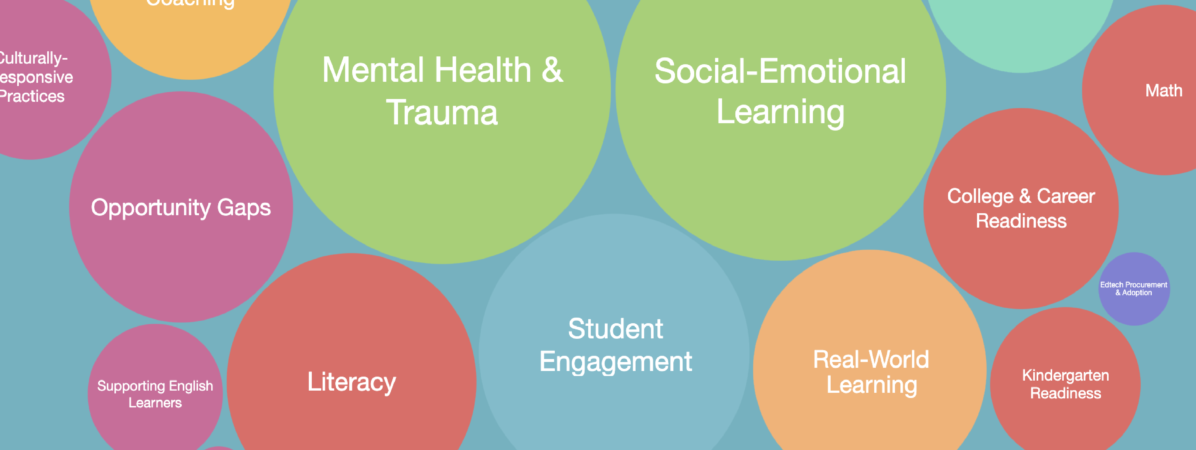
November 5, 2019 | By Babe Liberman
Which education challenges are schools and districts prioritizing?
Over the past two years, Digital Promise has engaged in a rigorous research process to surface common challenges being tackled in public schools around the country. The resulting Challenge Map presents 38 shared education challenges within nine broad themes related to:
For each challenge, the site highlights practitioner quotes about the impact of the challenge in context, shares information about interventions currently being tested, and links to research-based resources.
In spring 2019, we collected nearly 350 survey responses from stakeholders working in all levels across public schools. These practitioners provided feedback on all 38 challenges, including their perspectives on which challenges are the most urgent, affect the most students and teachers, and are experienced most often. The survey also asked respondents how much progress their school or district has made toward addressing each challenge.
Overall, three challenges ranked as highest-priority by all respondents:
These top challenges all fall under the school culture, climate and safety theme. This finding aligns with a growing trend toward a “whole child” approach. More and more schools across the country are thinking beyond academic initiatives, working to broaden the definition of success to ensure all students are healthy, safe, and engaged in their learning.
We also found that all three challenges related to instructional approaches ranked in the top 10 of all respondents’ high-priority challenges.
These results demonstrate that classroom-level challenges—including how educators are teaching—are top-of-mind for practitioners at all levels. Teachers must make pedagogical decisions, including planning and implementing novel approaches that meet the needs of each student, every day, so it’s no surprise that these challenges are priorities.
Finally, we found that the only student learning challenge to rank in the top 10 is literacy (#6). Literacy refers to the reading, writing, and communication skills all students need to be successful in the full range of academic subjects. While early reading is a particular focus area, these survey results show that literacy is also a priority for practitioners working with adolescent learners.
You can dig into these findings using our interactive data visualization tool.
Each circle represents a challenge. The size of the circle is proportional to the number of respondents who reported it as a priority, and the color represents the corresponding theme. Use filters to view priority challenges based on respondents’ roles in education, school level, and district context. You can also hover over any challenge for quick statistics, and click to learn more about the challenge and access additional resources.

Filtering by organization shows that the highest priority challenges—according to staff working in high schools—are mental health and trauma, real world learning, and student engagement.
Additionally, each challenge page shares more specific data about how the challenge is experienced by practitioners in different roles and school and district contexts.


For example, the survey results show that while 89% of educators responded that real world learning is an urgent challenge, only 22% reported that their schools have made significant progress in addressing the challenge.
![]()

The survey results also show a large variation in how practitioners from different district contexts experience the challenge of engaging diverse families. While 70% of staff from urban districts responded that this challenge is urgent, only 39% of staff from suburban districts agreed.
We’re continuing to collect survey responses. We’ll keep the data visualization up to date and will use the results to ensure programming and communications efforts are driven by practitioners’ priority challenges.
Finally, building off of these Challenge Map learnings, we’re working to establish the need for practitioner-driven, equity-centered research agendas in education.
Explore what we’ve learned about priority education challenges today, and share your perspective!
By Elliott Barnes and Sara Mungall